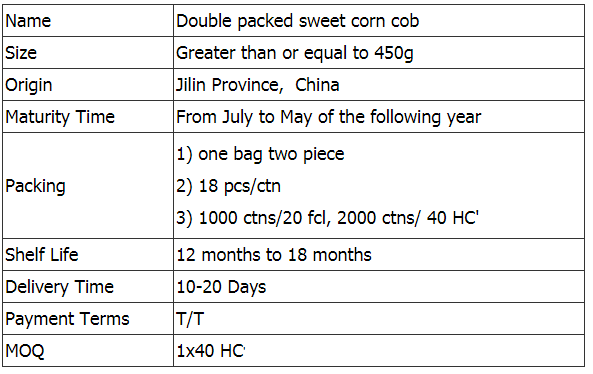Variety improvement is the basis and premise for increasing the economic benefits of raising pigs. Especially for newly built pig farms, pigs with high production performance and healthy level should be selected when purchasing pigs. Purpose of introduction The domestic lean pig breeds mainly include: purebred pigs, binary hybrid pigs and matching pigs. When introducing, the main purpose of the production is to produce pigs or commercial pigs, whether it is a new farm or a new bloodline. The purpose and quantity of the introduction are different. Production of breeding pigs. It is generally necessary to introduce purebred pigs, such as Dabai, Changbai, and Duroc, to produce or sell purebred pigs or to produce binary hybrid pigs. Produce commercial pigs. Small-scale farmers can directly introduce binary hybrid sows, supporting Duroc boars or binary hybrid boars to breed ternary or quaternary commercial pigs; large-scale pig farms can simultaneously introduce purebred pigs and binary sows. Purebred pigs are used for hybrid production of binary sows, which can supplement the renewal needs of the binary sows, avoid repeated introduction, and the binary hybrid pigs are directly used to produce commercial pigs. It is also possible to directly introduce pure breeding pigs for binary hybridization, and then to produce commercial pigs after the expansion of the binary pigs. The advantage of this model is that the investment cost is low, the second is to ensure that all binary varieties are pure, and the third is that the pigs are highly uniform. The disadvantages are slow results and long production cycles. Time, weight, quantity time. When introducing a new field, it is necessary to inspect the seed farm before the construction. Generally, one to two sow houses will be built according to the number of introductions. After isolation and disinfection, they can be introduced. Its shortcomings are not conducive to epidemic prevention, or various equipment and facilities are imperfect, and it is inconvenient to carry out work; the advantage is that at least half a year before seeing the benefits, the introduction should avoid the peak year of pig breeding benefits, when the introduction, the breeding room is small, and the price Higher, the offspring that are propagated after introduction are likely to enter the next trough. When the number of introduced pigs is large, it should be carried out in batches to increase the selection intensity and facilitate the planned breeding, and to produce as balanced as possible. body weight. The introduced breeding pigs generally require more than 50 kilograms. It should not be too large. The overweight pigs are likely to pick the remaining pigs and affect the immunization plan after introduction. Quantity. To update the blood, you can introduce a small number of boar sows to increase or update the bloodline. If the new farm is not purchased at the production scale, the number of introductions is 1/5~1/4 of the total scale of the field. When introducing boars, consider having sufficient lineage and quantity to prevent boars that do not fit when the sows are in estrus. Selection of the farm when introducing Choose a modest scale, high credibility, a "breeding production and operation permit", sufficient seeding capacity, and a high level of technology. 1. Select the field to put the health of the breeding pigs first, and if necessary, conduct blood tests before purchasing, and then introduce them after passing the test. Generally, the construction time is short, and the breeding pigs are less likely to have foreign diseases. 2. The pedigree of the breeding pig should be clear. 3. Choose a better home service. 4. Try to buy from a farm, otherwise it will increase the possibility of illness. 5. Select the field home should first understand or consult, then go to the home and sales staff to understand the situation, should not blindly investigate, so as not to see some surface phenomena, the pigs may be just some "model pigs." Precautions when choosing a breeding pig Pay attention to the blood relationship of male and female pigs when breeding (except for hybridization). When pure breeding, try to avoid blood relationship with male and female sows. When the number of introductions is large, the number of boars of each breed is not less than 5, and the proportion of males and females and blood distribution are moderate. The selected breeding pigs should conform to the characteristics of this breed, and there is no obvious defect in the whole body. The pig's limbs, body size, development, and nipple scores are good. For the sow's vulva, nipple, and abdominal line, the testicles, foreskin, and libido of the boar should be observed. It is worth noting that those who are “beautiful†tend to have low fertility when choosing sows. It is best to choose from a pig professional with many years of practical experience. If the selected breeding pig is to measure the herd, it is necessary to select a special breeding pig with a high breeding value (may be also expensive). When selecting seeds, there must be standards in mind, and it is not easy to compare them. It is easy to choose "flowers". The choice of the father is stricter. The selected breeding pig must have an ear tag with an ear tag and an immune sign. Preparation before introduction As far as possible, the introduced breeding pigs should be kept in the isolation house, but the isolation house must be kept clean. It is best to never install the pigs, or the isolation house should be thoroughly cleaned, disinfected and dried before being introduced. The introduced breeding pigs should have a place of activity, preferably a land surface, and appropriate exercise should be carried out every day to ensure the health of the limbs. Before entering the pig, the water in the drinking fountain and the main pipe should be cleaned, and the house should be warm in winter and cool in summer. Prepare some medicines and feeds, mainly antibiotics (such as sputum, sylvestre, amoxicillin, oxytetracycline, philanthrop, florfenicol, etc.) to prevent breathing caused by environmental and transport stress System and digestive diseases. It is best to buy some full-price materials or pre-mixed materials from the field to ensure a one-week transition period, and conditionally prepare some green and juicy feeds such as carrots and cabbage. Before the introduction, there should be a dumping or unloading the pig rack, or a pile of fine sand with the same height as the truck. Precautions during transportation Transportation methods generally include automobile transportation, air transportation, and railway transportation. The common one is automobile transportation. When introducing, it is necessary to have a professional vehicle with transportation experience. Before the transportation, you should prepare the "Certificate of Animal Vehicle Disinfection", "Certificate of Animal Quarantine in County County", "Certificate of Non-epidemic Area of ​​No. 5 Disease", "Immune Card for Breeding Pigs", the pedigree of breeding pigs, the invoice, and the immunization program of the other side. , purchase contracts, feed formula, individual provinces and cities also need to introduce the "introduction certificate" issued by the animal husbandry department. Transport vehicles should have a special barrier to prevent extrusion on the way. The bottom of the car is preferably equipped with a curtain, straw or wheat bran to prevent damage to the feet and hooves. It is best to use a special transport vehicle to prevent the vehicle from being infected with the diseased pigs. The vehicle and utensils should be thoroughly disinfected twice or more with disinfectant 12 hours before the pigs are loaded. Vehicles should be equipped with spare items such as flashlights and buckets. It is best to inject a long-acting antibiotic (such as long-acting oxytetracycline) before loading the pig, and a stress-sensitive pig can inject a sedative (such as chlorpromazine hydrochloride). Long-distance transport of pigs in each compartment should not be too much, so that each pig can lie down, but not too little. One transportation cost increases; the second is too loose and it is easy to damage the breeding pigs. When loading pigs, the size of the pigs is divided into columns, and the boars with crawling behavior are best to use a single column. Long-distance transportation should try to take the highway as much as possible to avoid traffic jams, sudden braking, sharp turns, such as abnormalities found in the middle, stop parking at any time, drive the pigs to stand, and observe whether there is a pressurized pig. When loading pigs, you should be slow and slow to prevent damage to your feet and hooves. Summer should be carried out in the morning and evening when the temperature is too high, and the pig body and the carriage can be watered while being installed. Pay attention to ventilation, anti-crowding, heatstroke prevention, rain and direct sunlight in summer; keep warm and windproof in winter, but leave ventilation on the side or back, and the tarpaulin should be breathable. After the pig is finished, it is necessary to start as soon as possible to prevent the stay time from being too long, and the pig fights to cause damage. Short-term feeding management after introduction This stage is very critical. The main task is to prepare the breeding pigs for the environment and restore their physical fitness as soon as possible, in preparation for the next breeding task. When unloading, prevent the breeding pigs from being damaged. Do not rush into the pens after unloading. They should rest in the place for 30 minutes. Use the cloth to slowly break into the pens according to the size, variety and male and female. Generally, 4 to 5 heads are kept in each column. Boars weighing more than 70 kg can also raise 3 to 4 heads per pen, but boars that are overweight or have cross-bred behavior should be kept in a single column. After the column is completed, the pigs should be disinfected, spray some odorous drugs (such as Lai, air cleaner), and have a special care for more than 12 hours to prevent pigs from fighting. Do not feed the breeding pigs within 12 hours after arrival to ensure a clean and adequate drinking water. It is best to add some electrolytes, multi-dimensional or feed greenish feed in the drinking water. Feed the feed gradually, increase the normal feed after 3 days to 5 days, and add some antibiotics (such as Zhiyuanjing, amoxicillin) to the feed. The winter and spring seasons are more important, and it should be administered continuously for about 10 days. Individual sick pigs should be treated promptly. The feed of pigs should be based on body weight and variety, and feed the pigs at each stage. They should not feed the pigs or pregnant sows. After weighing 90 kg, they should limit the feeding and add some green feed (such as carrots) to the feed. Hay powder). After the pigs weigh 90 kilograms, we must ensure that each pig grows 2 hours of free exercise time per day (to the playground), improve its physical condition and promote estrus. In the summer, the rearing sows can add appropriate amounts of biotin and Vc, baking soda to the feed to prevent heat stress. After the adaptation period (7 days to 15 days), the breeding pigs should be dewormed and immunized according to the immunization program (antibiotic level monitoring if necessary). When the breeding pig reaches about 6 months of age, you should check the pedigree to do a breeding program, and start to set up a reserve boar. For some diseases that affect reproduction, if there is no vaccine protection, the pig herd can be piled up on the newly-introduced rearing pig breeding ground. In short, the introduction should have a scientific plan, a cautious attitude, and careful feeding management to be successful. Of course, with the development of society, market changes, and advances in science and technology, introduction will become more and more scientific. Ready-to-eat Double Packed Sweet Corn
In this category is sweet corn from Jilin Province Agricultural Sister-in-law Food Co.
The physical characteristics of maize consist of grain colour, grain shape, seed coat lustre, grain length, grain width, 100 grain weight, grain diameter, uniformity of the seed and hardness. In most cases, the colour of the endosperm of mature maize kernels is yellow or white, while the seed coat and paste layer are colourless and transparent. Depending on the colour of the kernels, there are three types of maize: yellow, white and mixed. Depending on the kernel form, hardness and different uses, maize is divided into two types: common maize (hard, intermediate, horse-tooth, hard-horse, horse-hard) and special maize (high-lysine maize, high-oil maize, sweet maize, cracked maize, glutinous maize).
The sweet corn of Jilin Province Agricultural Sister-in-law Food Co., Ltd. belongs to the special corn category of yellow corn.
Also known as fruit corn. The leaves on the outside are light green (only the ears are in the pack, we have removed the leaves for you) and the kernels inside are white or yellow. Sweeter than regular sweet corn, but lower in starch and rich in vitamin E and fibre, which is anti-ageing and aids digestion. Perfect for eating raw, mixed with vegetables in salads; it can also be steamed, but don't cook it for too long, about 5 minutes.
If you have any questions, please contact us directly. If you have any questions, please email us directly.
Delectable Sweet Corn Cob,Microwave Sweet Corn Cob,Country Sweet Corn,Ready To Eat Sweet Corn Jilin Province Argricultural Sister-in-law Food Co., Ltd. , https://www.nscorn.com

